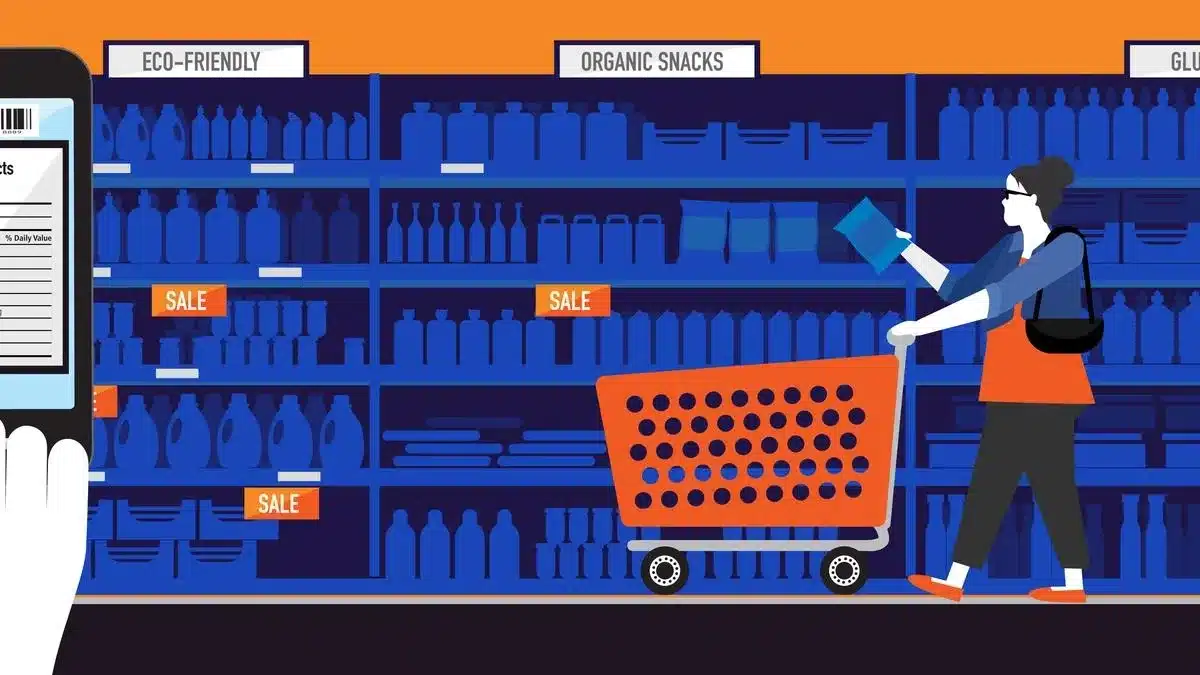What’s in today’s article?
- Overview
- Key Findings of the Report
- Significance for India
- Importance of Front-of-Pack Labelling
- Recommendations by the Report
- What is the Indian Nutritional Rating System?
- About FSSAI
- Role/Functions of FSSAI
- Composition of FSSAI
Overview
- A report by the Access to Nutrition Initiative (ATNi) highlights the disparities in the healthiness of food and beverage (F&B) products sold in low-and-middle-income countries (LMICs) compared to high-income countries (HICs).
- This brings attention to the importance of labelling packaged food to guide consumers toward healthier choices.
Key Findings of the Report
- Health Star Rating System:
- The report analysed over 52,000 products from major brands like Nestlé, PepsiCo, Unilever, and others.
- Products were rated out of 5 stars, with scores above 3.5 considered healthy.
- Average scores:
- LMICs: 1.8
- HICs: 2.3
- Disparities in Nutrition:
- Fewer affordable healthy options in LMICs.
- Micronutrient information was less frequently provided for products in LMICs.
- Historical Patterns:
- Previous reports revealed similar issues. For instance, Nestlé’s baby food in India and African markets contained higher sugar levels compared to European versions, sparking government scrutiny.
Significance for India
- Health Crisis:
- Non-Communicable Diseases (NCDs): India faces a significant burden, with over 10 crore people suffering from diabetes and high obesity rates.
- Undernutrition and Micronutrient Deficiencies: Coexisting challenges due to unhealthy diets and economic disparities.
- Dietary Patterns:
- Rising consumption of processed foods rich in sugar and fat.
- Over 56% of India’s disease burden is linked to unhealthy diets (ICMR, 2023).
- Affordability Gap:
- Over half of Indians cannot afford a healthy diet.
- Household spending on processed foods is increasing.
Importance of Front-of-Pack Labelling
- Global Standards:
- Countries like Chile and Mexico successfully reduced consumption of sugary beverages after mandatory front-of-pack labelling (FOPL).
- India’s Current Efforts:
- India is part of World Health Assembly resolutions advocating for protecting children from junk food marketing.
- Policies like the National Multisectoral Action Plan (2017-2022) aimed at tackling NCDs have seen limited success in implementing labeling regulations.
- Challenges:
- The 2022 Draft Notification for FOPL is yet to make progress.
- Voluntary efforts by F&B companies have been insufficient.
Recommendations by the Report
- Mandatory Regulations:
- Stronger policies for clear labelling of sugar, salt, and fat content on packaging.
- Public Awareness:
- Campaigns to educate consumers on interpreting nutritional labels.
- Affordable Healthy Options:
- Incentivizing companies to offer nutritious products at accessible prices for low-income groups.
- Government Action:
- Strengthening enforcement and adopting global best practices for food labelling.
What is the Indian Nutritional Rating System?
- The INR system rates the overall nutritional profile for packaged food by assigning it a rating from ½ star (least healthy) to 5 stars (healthiest).
- More stars indicate the food product is better positioned to provide for daily human need of nutrients.
- As per the notification, solid food with a score of more than 25 will be given 0.5 stars, and those with a score less than – (minus)11 will get 5 stars.
- To generate the star-rating logo for the product, food businesses have to submit nutritional profiles of the products concerned on FSSAI’s portal.
About FSSAI
- The Food Safety and Standards Authority of India is a statutory body under the Food Safety and Standards Act, 2006.
- Objectives:
- To lay down science-based standards for articles of food
- To regulate manufacture, storage, distribution, import and sale of food
- To facilitate safety of food
Role/Functions of FSSAI
- Framing of Regulations to lay down the standards/guidelines in relation to articles of food.
- Laying down mechanisms/guidelines for accreditation of certification bodies engaged in certification of food safety management system.
- Collect and collate data regarding food consumption, incidence and prevalence of biological risk, contaminants in food, etc.
- Creating an information network across the country so that public receive reliable and objective information about food safety and issues of concern.
- Provide training programmes for persons who are involved or intend to get involved in food businesses.
- Contribute to the development of international technical standards for food, sanitary and phytol-sanitary standards.
Composition of FSSAI
- The FSSAI comprises of a Chairperson and twenty-two members out of which one – third are to be women.
- The Chairperson of FSSAI is appointed by the Central Government.
- The Food Authority is assisted by Scientific Committees and Panels in setting standards and the Central Advisory Committee in coordinating with enforcement agencies.
- Concerned Ministry: Ministry of Health and Family Welfare
- The FSSAI appoints food safety authorities at the state level.
- The primary responsibility for enforcement is largely with the State Food Safety Commissioners.
Q1. What is Food Adulteration?
Food adulteration is the intentional act of changing the quality of food by adding or removing substances, or by replacing them with inferior ingredients. This is done to gain economic advantage or to modify the food’s appearance, taste, weight, volume, or shelf life.
Q2. What are Carbohydrates?
Carbohydrates, or carbs, are sugar molecules. Along with proteins and fats, carbohydrates are one of three main nutrients found in foods and drinks. Your body breaks down carbohydrates into glucose. Glucose, or blood sugar, is the main source of energy for your body’s cells, tissues, and organs.
News: Should packaged food content be labelled? | Explained
Last updated on June, 2025
→ UPSC Notification 2025 was released on 22nd January 2025.
→ UPSC Prelims Result 2025 is out now for the CSE held on 25 May 2025.
→ UPSC Prelims Question Paper 2025 and Unofficial Prelims Answer Key 2025 are available now.
→ UPSC Calendar 2026 is released on 15th May, 2025.
→ The UPSC Vacancy 2025 were released 1129, out of which 979 were for UPSC CSE and remaining 150 are for UPSC IFoS.
→ UPSC Mains 2025 will be conducted on 22nd August 2025.
→ UPSC Prelims 2026 will be conducted on 24th May, 2026 & UPSC Mains 2026 will be conducted on 21st August 2026.
→ The UPSC Selection Process is of 3 stages-Prelims, Mains and Interview.
→ UPSC Result 2024 is released with latest UPSC Marksheet 2024. Check Now!
→ UPSC Toppers List 2024 is released now. Shakti Dubey is UPSC AIR 1 2024 Topper.
→ Also check Best IAS Coaching in Delhi























